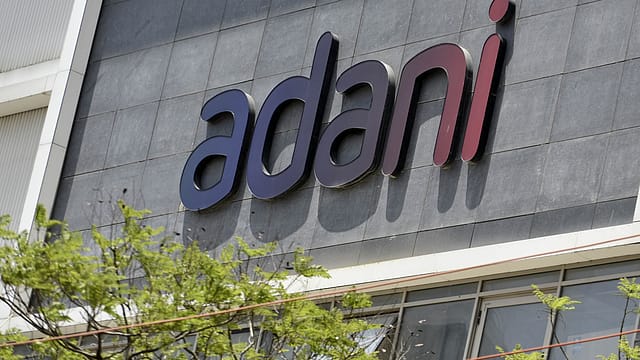Adani Power Q2 profit slips 11.9% to ₹2,906 crore; adds 4.5 GW in new power deals
ADVERTISEMENT

Adani Power Ltd (APL), part of the Adani Group, reported a consolidated net profit of ₹2,906 crore for the second quarter of FY26, down from ₹3,298 crore in the same quarter last year, according to the company’s financial results released on Thursday.
This indicates a decrease of ₹392 crore, or roughly 11.9% year-on-year, reflecting reduced profitability during the quarter.
Despite weather-driven demand disruptions and lower merchant tariffs, the company reported stable earnings and continued its aggressive capacity expansion.
According to the report, total revenue rose to ₹14,308 crore in Q2 FY26 from ₹14,063 crore in Q2 FY25, even as power tariffs remained subdued. EBITDA remained steady at ₹6,001 crore, nearly unchanged from ₹6,000 crore in the previous year’s quarter.
S. B. Khyalia, Chief Executive Officer of APL, said in the report that the company’s strong results “highlight our operational efficiency and competitive advantages” despite demand fluctuations caused by prolonged monsoons. “We are steadily expanding our presence in the market by securing another 4.5 GW of new long-term PPAs under the SHAKTI scheme. Our strong profitability and liquidity position us well to achieve our enhanced capacity expansion goal of 42 GW by 2031-32,” Khyalia added.
December 2025
The annual Fortune 500 India list, the definitive compendium of corporate performance, is out. This year, the cumulative revenue of the Fortune 500 India companies has breached $2 trillion for the first time. Plus, find out which are the Best B-schools in India.
The company signed new long-term Power Purchase Agreements totalling 4,570 MW — including 2,400 MW with Bihar DISCOM, 1,600 MW with Madhya Pradesh DISCOM, and 570 MW with Karnataka DISCOM — all expected to commence by October 2025. Adani Power also completed the acquisition of Vidarbha Industries Power Ltd, adding 600 MW to its portfolio, bringing its total capacity to 18,150 MW.
Power sales volumes grew 7.4% year-on-year to 23.7 billion units (BU) in Q2 FY26, up from 22 BU in the same period last year, despite what the company called “a high base effect and early monsoon disruptions.” For the half year ended 30 September 2025, total power sales stood at 48.3 BU, a 4.4% increase from H1 FY25.
Adani Power noted that India’s total energy demand increased by a modest 3.2% in Q2 FY26, mainly due to the prolonged monsoon and a high baseline from last year’s heatwave-driven demand surge.
On the financial front, continuing operating revenue increased slightly by 1.21% to ₹13,106 crore in Q2 FY26. Continuing EBITDA remained almost unchanged at ₹5,333 crore, while continuing profit before tax was ₹3,298 crore. The company attributed the small decline in profit to higher depreciation and tax expenses from recent acquisitions.
Total debt increased to ₹ 47,253.69 crore as of September 30, 2025, compared with ₹38,334.88 crore as of 31 March 2025, mainly due to bridge financing for capital expenditure and working capital borrowings to support its expanding operations. Net debt stood at ₹36,775.72 crore at the end of the quarter. The company also fully redeemed ₹478.33 crore worth of Unsecured Perpetual Securities during the quarter.
